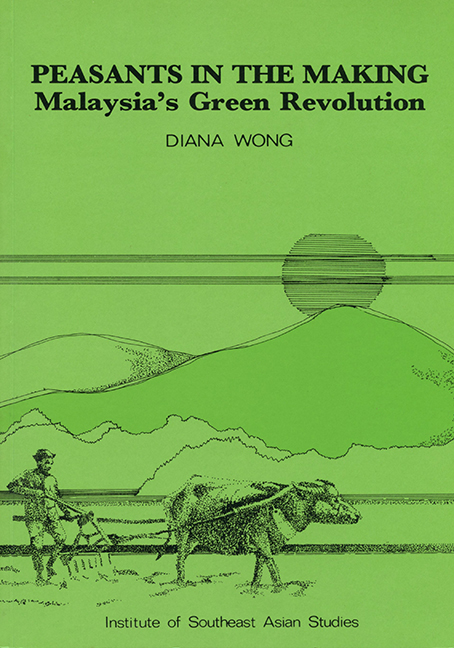Book contents
- Frontmatter
- Contents
- Acknowledgements
- Part I The Framing of the Study
- Chapter 1 The Empirical Setting: The Green Revolution and Muda
- Chapter 2 Peasant Reproduction: A Framework of Analysis
- Chapter 3 The Making of the Muda Region: The Social Organization of Land Colonization
- Part II The Anatomy of the Village
- Part III The Transformation of the Village Economy
- Part IV The Transformation of Village Society: The Unfolding of Social Differentiation
- Part V Conclusion
- Appendix I Research Methodology
- Appendix II Questionnaire
- Bibliography
- THE AUTHOR
Chapter 2 - Peasant Reproduction: A Framework of Analysis
from Part I - The Framing of the Study
Published online by Cambridge University Press: 21 October 2015
- Frontmatter
- Contents
- Acknowledgements
- Part I The Framing of the Study
- Chapter 1 The Empirical Setting: The Green Revolution and Muda
- Chapter 2 Peasant Reproduction: A Framework of Analysis
- Chapter 3 The Making of the Muda Region: The Social Organization of Land Colonization
- Part II The Anatomy of the Village
- Part III The Transformation of the Village Economy
- Part IV The Transformation of Village Society: The Unfolding of Social Differentiation
- Part V Conclusion
- Appendix I Research Methodology
- Appendix II Questionnaire
- Bibliography
- THE AUTHOR
Summary
INTRODUCTION
The empirical point of departure for this study is the process of change at the village level in the wake of technological and social innovations induced by the so-called “Green Revolution”. Seen in broader terms, the theme is that of the transformation of agrarian structures, here as elsewhere, as a result of the penetration of capitalism into agriculture. This problematique has been a central concern in development sociology in its effort to understand the phenomenon of underdevelopment; its theoretical underpining however has been enriched by the discovery of the “peasant” by various other disciplines in the last decade — in particular anthropologists, rural sociologists and historians. In this chapter, an attempt shall be made to outline the various theoretical issues involved and to make explicit the analytical concepts and theoretical framework which have guided the interpretation of the empirical material presented in the following chapters.
THE CLASSICAL BATTLE LINE: LENIN VS. CHAYANOV
The terms of the debate were set by the differing analyses offered by Lenin and Chayanov of the “state of the Russian peasantry” (in response to the expanding capitalist market) at the turn of the century. In brief, Lenin's position was that
the old peasantry is not only ‘differentiating’, it is being completely dissolved, it is ceasing to exist, it is being ousted by absolutely new types of rural inhabitants — types that are the basis of a society in which commodity exchange and capitalist production prevail. These types are the rural bourgeoisie (chiefly petty bourgeoisie) and the rural proletariat — a class of commodity producers and a class of agricultural wage-workers.
For Chayanov on the other hand, the peasant economy is characterized by the existence of a unit of production and consumption (the “Family Labour Farm”) which has the capacity to survive, even in the face of the expansion of commodity production. Changes in the size of farm units, which Lenin attributed to the process of concentration and social differentiation, were explained by Chayanov in terms of demographic differentiation.
- Type
- Chapter
- Information
- Peasants in the MakingMalaysia's Green Revolution, pp. 15 - 28Publisher: ISEAS–Yusof Ishak InstitutePrint publication year: 1987



